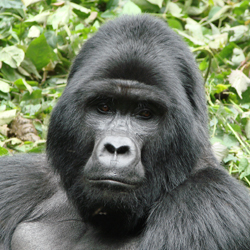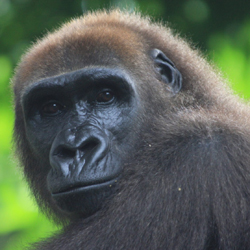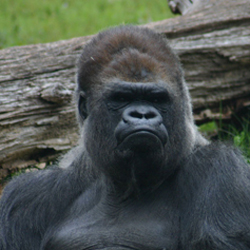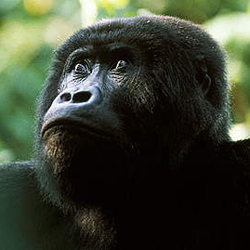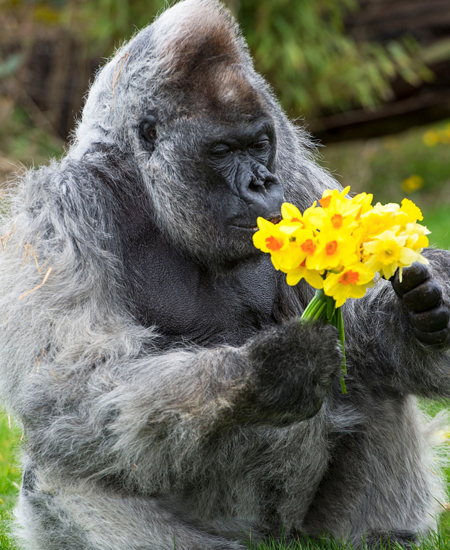
Gorillas are ground-dwelling, predominantly herbivorous apes. The genus Gorilla is divided into two species:
the eastern gorillas and the western gorillas (both critically endangered),and either four or five subspecies.
They are the largest living primates. The DNA of gorillas is highly similar to that ofhumans, from 95 to 99%
depending on what is included, and they are the next closest living relatives to humans after the chimpanzees
and bonobos.
Location: The forests of central Sub-Saharan Africa. Lowland gorillas living in Central West African countries and
eastern lowland gorillas living in the Democratic Republic of the Congo near its border with Rwanda.
Habitat: Gorillas' natural habitats cover tropical or subtropical forests in Sub-Saharan Africa. Although
their range covers a small percentage of Sub-Saharan Africa, gorillas cover a wide range of elevations. The
mountain gorilla inhabits the Albertine Rift montane cloud forests of the Virunga Volcanoes, ranging in altitude
from 2,200 to 4,300 metres (7,200 to 14,100 ft). Lowland gorillas live in dense forests and lowland swamps and
marshes as low as sea level.
Lifespan: A gorilla's lifespan is normally between 35 and 40 years, although zoo gorillas may
live for 50 years or more. Colo, a female western gorilla at the Columbus Zoo and Aquarium was the oldest known gorilla,
at 60 years of age when she died on January 17, 2017.
